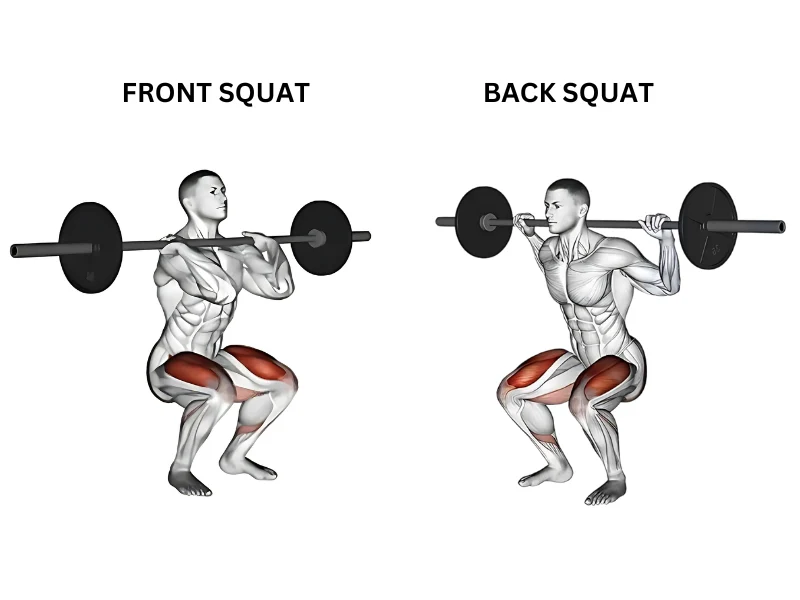How to squat without a rack sounded sketchy at first — especially in a commercial gym.
I figured if I didn’t have a proper squat rack, leg day was basically a wash. No heavy barbell, no real strength gains, right?
But the more I looked around — especially on Reddit — I realized I wasn’t alone. Tons of people were asking the same questions I had:
“Is it safe to squat without a rack?”
“How can I hit legs hard without one?”
“Can I still use a barbell somehow?”
At first, I thought I needed some hack or shortcut. But what I actually found was a bunch of solid, real-world advice that helped me train smart — and still push heavy.
Is It Safe to Squat Without a Rack?
Honestly, that was my first big question — is it even safe to squat without a rack?
The short answer? Yes, but only if you’re smart about it.
In a commercial gym, there’s no margin for error. If you’re going heavy with no rack, you’ve got no safeties, no spotters, and no way to bail clean if things go south. I learned real quick that this isn’t the time to mess around.
How to Do Barbell Back Squat Without Rack
So I had to get serious about a few things:
- Keep the weight under control — no ego lifts.
- Pick smart variations — more on that in the next section.
- Dial in your form — no half-reps, no ego lifting.
Basically, when you’re going rack-free, safety should always come first. Always.
No Rack? These Squat Alternatives Worked for Me
When I realized I had to train legs without a squat rack, I honestly thought I was screwed. No rack? How the heck am I supposed to go heavy? But then I figured, damn, I just gotta get creative with this. I found a few solid options that hit hard and kept things safe.
Bodyweight Squats
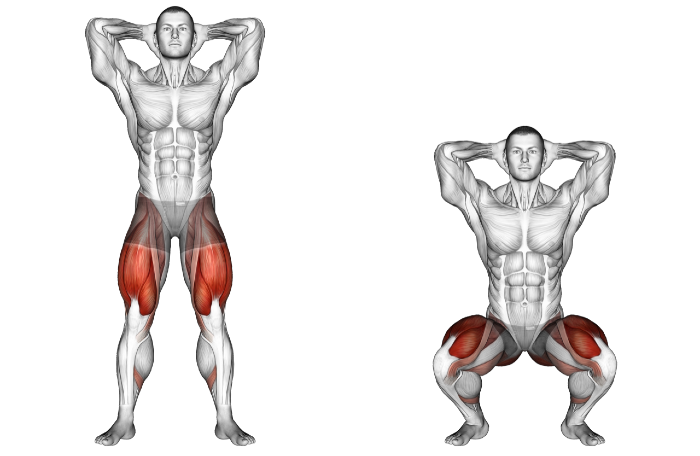
- I started simple. No weights, no ego — just pure movement.
- I focused on hitting full depth and keeping my form tight.
- Then I added tempo — like 3 seconds down, hold at the bottom — and yeah, it burned.
Goblet Squats (Dumbbell or Kettlebell)

- This one saved me. Grab a dumbbell (or kettlebell, for that matter), hold it close to your chest, and squat down like you would a barbell squat. Pretty simple move, but honestly, it felt way different.
- Staying upright felt way easier, and my core was working overtime.
- Also? No setup hassle. Just pick it up and go.
- Great for beginners or high-rep finishers.
Dumbbell Lunges & Split Squats
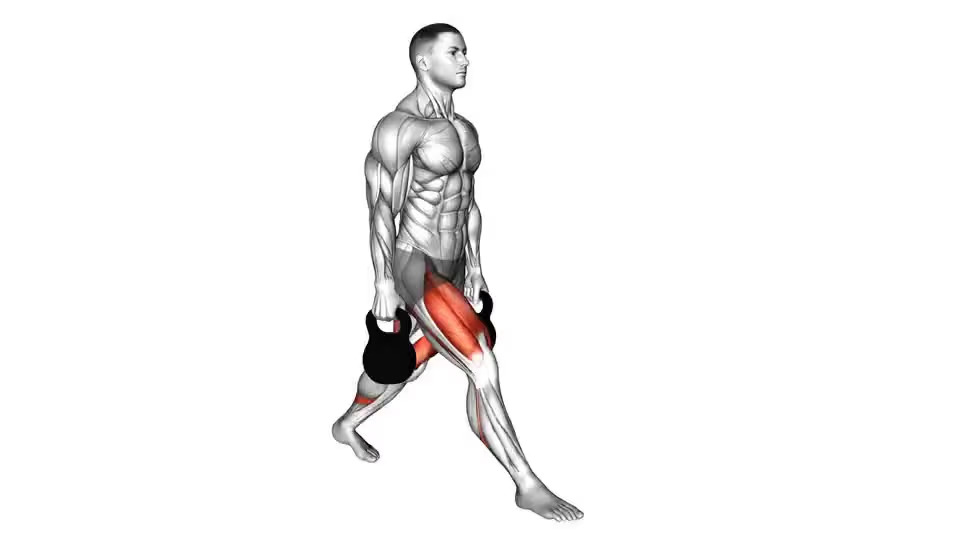
- These ones humbled me fast.
- I did walking lunges, reverse lunges, Bulgarian split squats — all with dumbbells.
- Every set lit up my quads, glutes, and balance.
- No rack needed, no excuses.
- So yeah, I didn’t need a rack to feel smoked. Just needed to train smart.
Still Wanted the Barbell? Here’s What I Did
Even without a rack, I wasn’t ready to give up barbell work. I just had to be smart about it. Here’s what I found actually worked in a commercial gym setup:
Zercher Squats
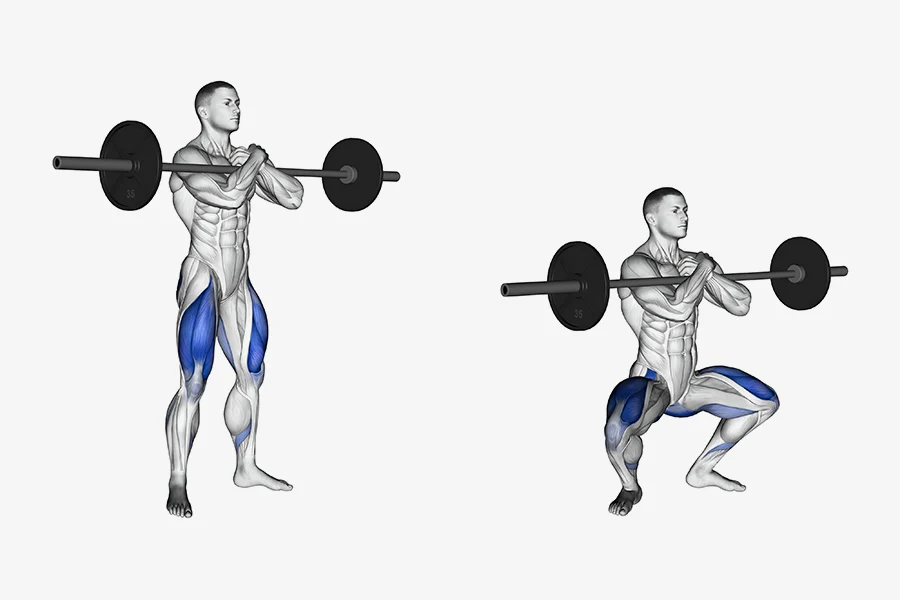
- Zerchers were awkward at first — not gonna lie.
- I had to deadlift the bar up, rest it in my elbows, then squat.
- Felt weird, looked weird… but wow, my legs were smoked.
- At first, the pressure on my arms caught me off guard. But afterward, once I got used to it, this move became a solid go-to for me.
- Overall, it felt stable and controlled — no sketchy moments. And best part? No rack needed at all.
Barbell Front Squats

- If you can clean it, you can front squat it — simple as that.
- I stuck to lighter weight and fewer reps to stay in control.
- It still hit my quads hard, and my core was working double-time.
- Plus, no need to mess with spotting or safety bars.
Belt Squats or Hack Squat Machines
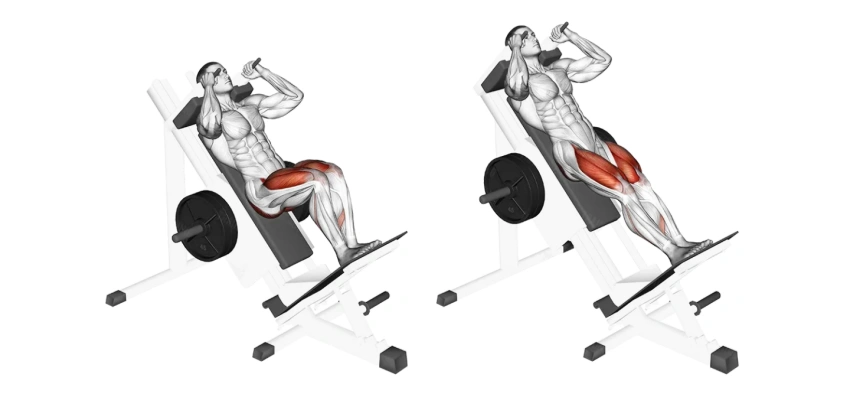
- My gym had a belt squat setup — total game changer.
- All legs, zero stress on my spine. Loved it for high volume sets.
- And when I wanted to push heavier, the hack squat machine had my back.
- Built-in safeties, smooth motion, and yeah — quad burn for days.
Bottom line: no rack doesn’t mean no barbell. You just need to pivot and stay sharp.
What I Learned About Safety
Yeah… I made the rookie mistake once — tried to back squat without a rack.
No spotter, no safeties, just me thinking, “It’ll be fine.” Spoiler: it wasn’t.
Luckily, I bailed without injury. But it was a wake-up call.
Here’s what I’ve learned since then — and honestly, I stick to this every leg day now:
- Warm up properly — not just one set. Get those joints moving.
- Go lighter than you think — ego lifting without a rack is a fast track to regret.
- Practice bailing — especially if you’re barbell squatting from the floor. Know how to drop it safely.
- Fallback moves matter — if it feels sketchy, I just hit goblet squats or belt squats. Still tough, way safer.
Commercial gym or not — safety’s gotta be non-negotiable. I learned that the hard way.
Even without a squat rack in your commercial gym, you can still train legs hard. Use good technique, stay safe, and show up with intensity—there’s always a way to get it done.
FAQs about Barbell Back Squat Without Rack
Yes, but you’ve gotta be smart about it. You can still squat with a barbell — using variations like Zercher squats or front squats cleaned from the floor. These moves let you work your legs without needing a rack, but they come with a learning curve and some safety considerations. Keep the weight light, dial in your form, and don’t go to failure. Also, always know how to bail if something goes wrong. Bottom line: it’s doable, but you’ve got to train with control, not ego.
There are plenty of solid alternatives. Goblet squats with a dumbbell or kettlebell are a killer option — easy setup and crazy core engagement. You can also go with split squats, lunges, or even belt squats if your gym has the setup. If you still want barbell work, Zercher squats or front squats (from the floor) get the job done. No rack? No problem — you just need the right plan.
Performing a barbell back squat without a squat rack can be challenging, but it’s definitely achievable with the right preparation and modifications. Start by ensuring that you have enough space and a flat, stable surface to perform the squats safely. If you don’t have a squat rack, consider alternatives like squat stands, a bench press with adjustable arms, or a Stienborn lift to safely lift the barbell into position. When performing a barbell back squat, make sure to start with lighter weights to focus on your form. It’s also a good idea to use a spotter or, if you have one, safety bars to catch the barbell in case you need to bail out of the squat. Start with a warm-up to prepare your muscles, and always check that the barbell is securely placed on your shoulders before initiating the movement.
A squat rack is certainly a useful piece of equipment, but whether or not you really need one depends on your goals, training environment, and exercise preferences. If you’re serious about lifting heavy weights and performing barbell back squats, having a squat rack provides safety and convenience. The rack allows you to set the barbell at an ideal height for lifting, eliminating the awkwardness and potential injury of having to lift it from the ground each time. For gym setups with limited space or budget, a squat rack is not strictly necessary. There are alternatives like squat stands, adjustable arms, or even Zercher squats and front squats that can help you target the same muscle groups. However, a squat rack does allow for a greater variety of exercises, including bench presses, overhead presses, and more, all of which require the barbell to be placed at a safe height.
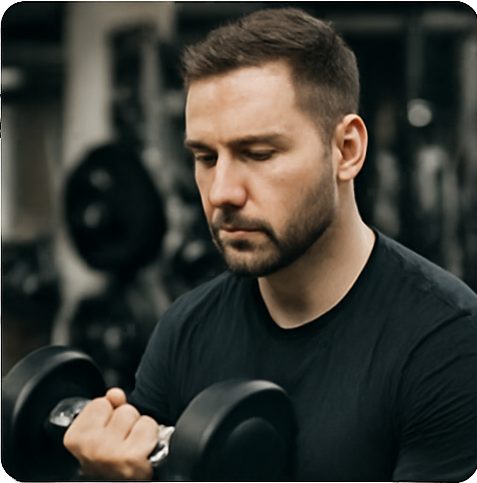
Hi, I’m the editor here at Leadman Fitness. We’re a manufacturer focused on producing top-quality barbells, plates, kettlebells, dumbbells, and strength training gear. I’ve been into sports and fitness for years, and I know my way around all kinds of gym equipment—both from using it and helping create it.
I spend a lot of time understanding the real problems people run into in the gym—whether it’s beginners trying to pick the right gear or experienced lifters looking for something more durable. I stay in close touch with our production team and talk directly with other equipment makers, so we’re always improving based on what real lifters and coaches are looking for.
What I share comes from hands-on experience—stuff that actually helps people train better, not just in theory, but in real gyms.
